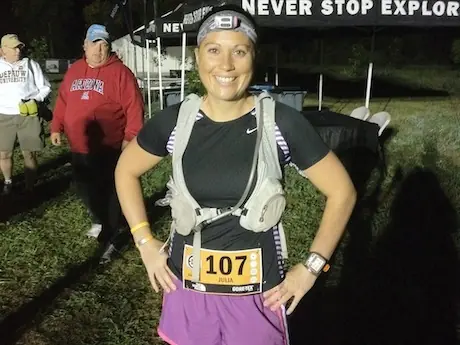Major shoe companies design and offer various types of shoes: support shoes, stability shoes, neutral shoes and minimalist shoes, for example. Try on several different shoes to find the one best suited for you. The correct shoe for you depends on your body type and biomechanics (how you land when you walk or run), running history and level of exercise. Minimalist shoes are not recommended for most runners who are beginning a running program.
More: Learn About Barefoot Running
The expected useful life of a pair of running shoes is 300 to 500 miles (depending on biomechanics and how you care for your shoes). At the end of your shoes' useful life, you may notice aches and pains in ankles, knees or hips as an indication it's time to replace your shoes.
A specialty running store will also have a variety of running clothes made from wicking fibers—good for keeping you cool and dry when exercising. Clothing made from cotton retains water (sweat) and will become heavy and uncomfortable when running. Cotton clothing is more likely to cause chafing issues as well.
More: Running Gear for Beginners
Easy Does It
With the basics taken care of, we are ready to run. Keep two principles at the forefront of running:
- Avoid running too much, too soon
- Endurance precedes speed
In order to maintain a running program for life (or a long period of time), runners need to stay healthy. We stay healthy by not running too many miles, not running too fast, and not running too many days a week. Rest and recovery days are critical components of staying healthy and adapting to fitness improvement—particularly for new runners.
Be child-like in your early stages. No child leaves the womb and runs a 3:00 marathon. Children learn to walk before they run. And it takes time to learn how to run farther, faster and with a purpose instead of a helter-skelter approach.
More: How Often Should Beginners Run?
Start with a calendar and a plan. Determine what three days a week and what time of each of these days you can walk, run or run/walk. Mark these days and times on your calendar. Treat them as you would an important business meeting or obligation. This will help you build a routine.
Without this commitment, it is very easy to procrastinate or skip a workout. And when you start to miss workouts, it is easy to fall off the training wagon entirely.
If you are unable to complete your entire scheduled workout, do as much as you can. A 10- or 20-minute workout is better than no workout, especially in busy times. Remember, you are building a habit, a platform for fitness and achieving your fitness goal.
More: Plan for Your Best Year of Running
The Natural Progression of Walking to Running
Physiologically, our bodies adapt to training. And we adapt over time. Through adaptation, fitness improves.
- 3
- of
- 4
About the Author

Brendan Cournane is a USATF and RRCA-certified running coach and motivational speaker based in Chicago. He has completed over 80 marathons, including one in all 50 States. Contact him at Coach@CoachBrendan.com or www.CoachBrendan.com.
Get ACTIVE on the Go


Couch to 5K®
The best way to get new runners off the couch and across the finish line of their first 5K.
Available for iOS | Android







Discuss This Article